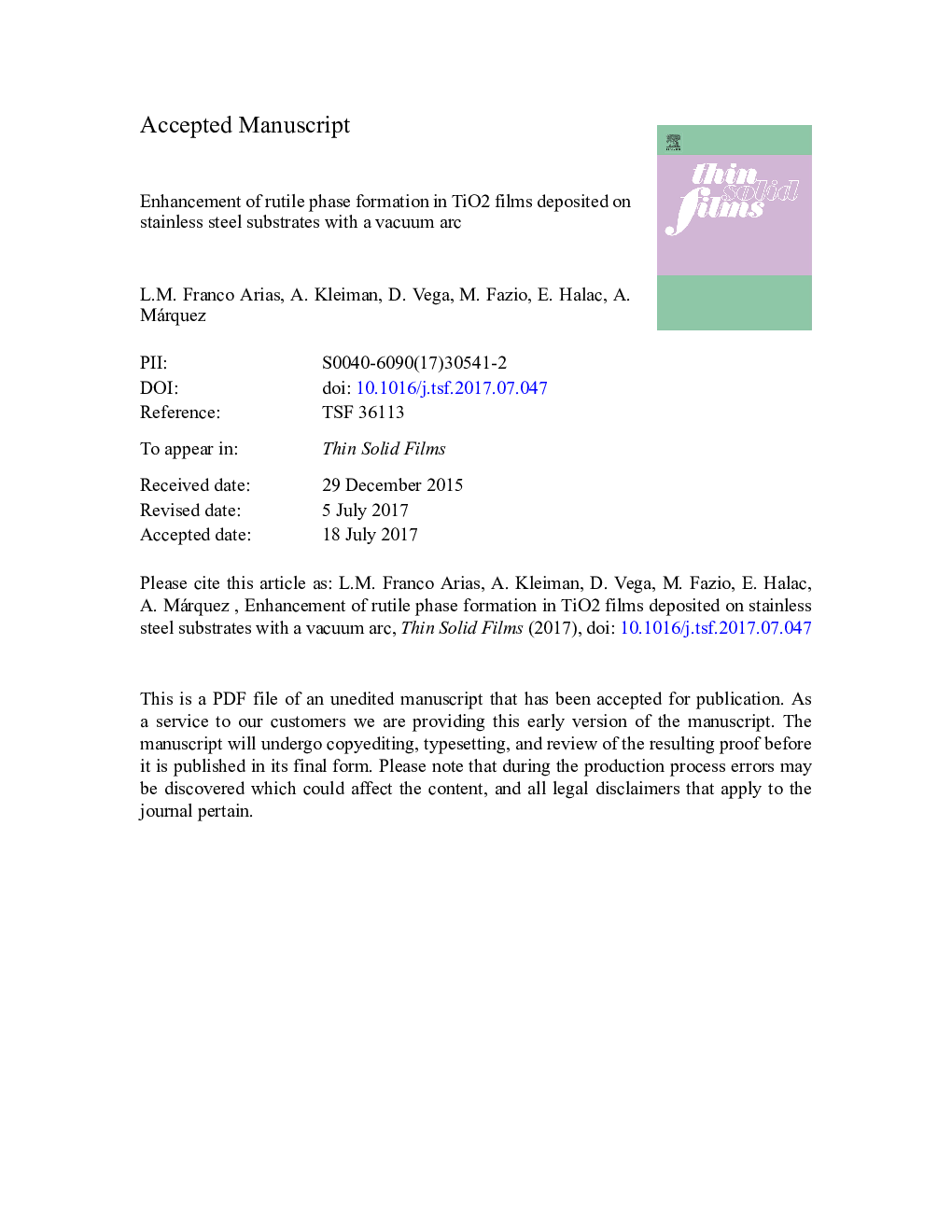| Article ID | Journal | Published Year | Pages | File Type |
|---|---|---|---|---|
| 5465864 | Thin Solid Films | 2017 | 42 Pages |
Abstract
The rutile phase of TiO2 has raised a wide interest for biomaterial applications. Since rutile is generally synthesized at high temperatures, a deposition process based on a cathodic arc discharge has been investigated in order to obtain rutile coatings at lower temperature on stainless steel substrates. In this work, TiO2 films were deposited on AISI 316 L stainless steel substrates heated at 300 and 400 °C with a negative bias of 120 V, employing Ti interlayers of different thicknesses. TiO2 films of approximately 500 and 900 nm were grown on Ti interlayers with thicknesses in the range 0-550 nm. The effect of Ti interlayers on the crystalline structure of TiO2 coatings was systematically studied with X-ray diffraction and Raman spectroscopy. The introduction of the Ti layer increased the rutile/anatase proportion either at 300 or 400 °C, turning rutile into the main phase in the TiO2 film. The largest amount of rutile for both temperatures was attained with a 55 nm Ti interlayer, the thinnest thickness studied.
Related Topics
Physical Sciences and Engineering
Materials Science
Nanotechnology
Authors
L.M. Franco Arias, A. Kleiman, D. Vega, M. Fazio, E. Halac, A. Márquez,
